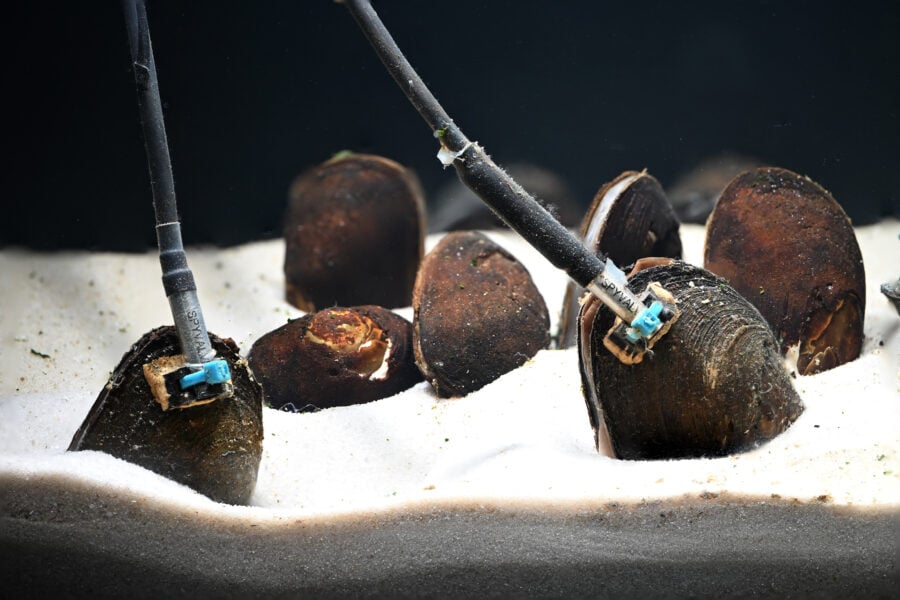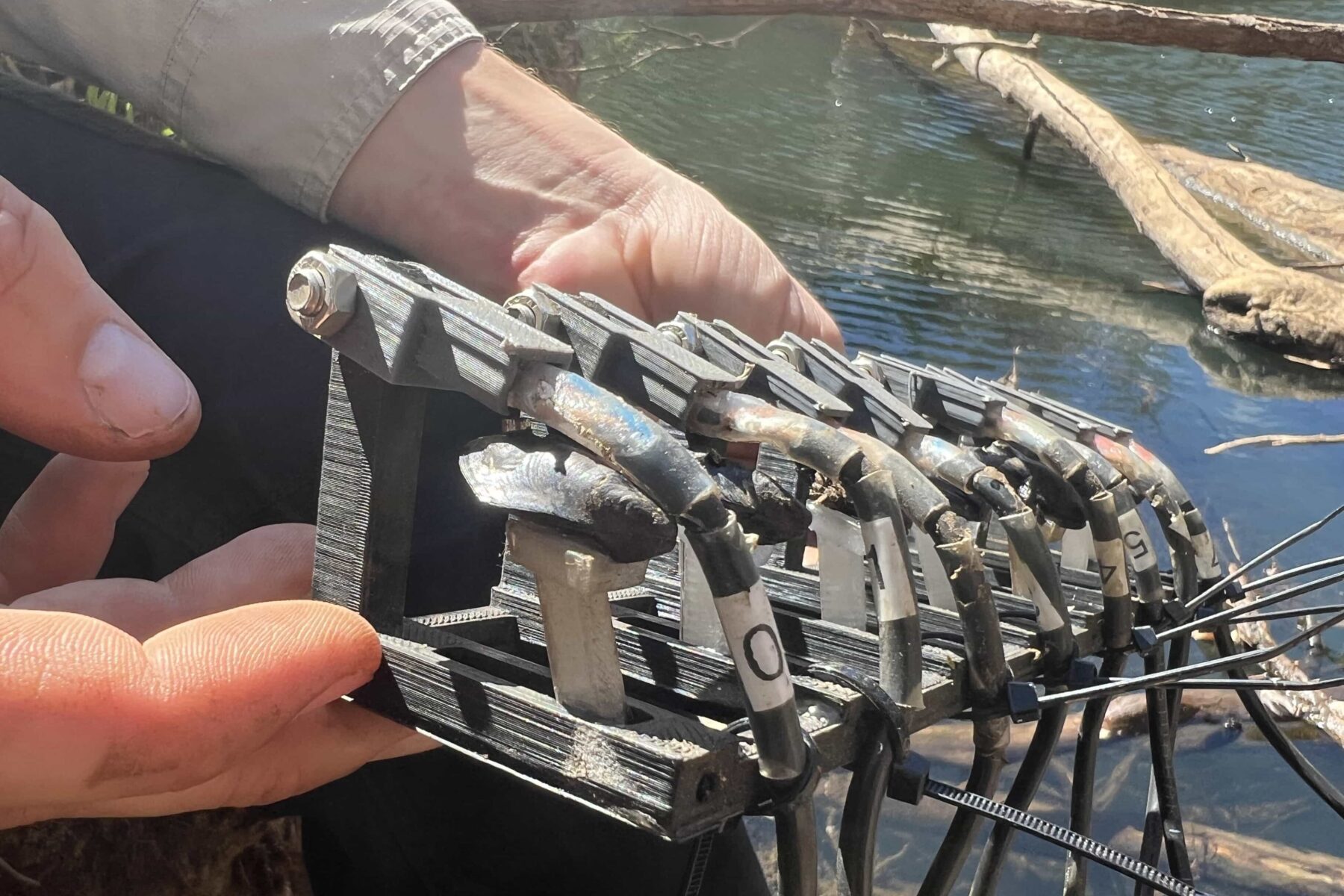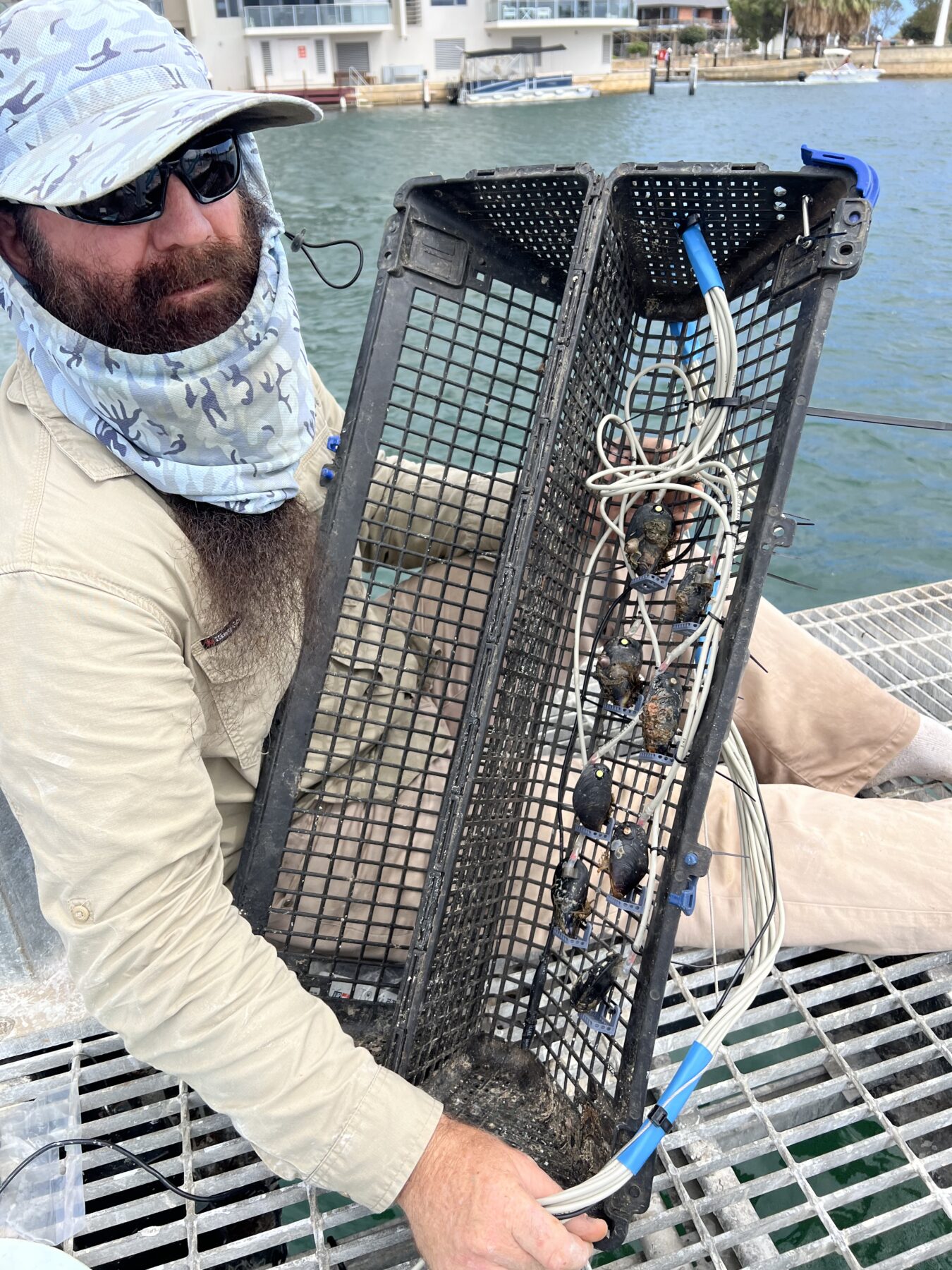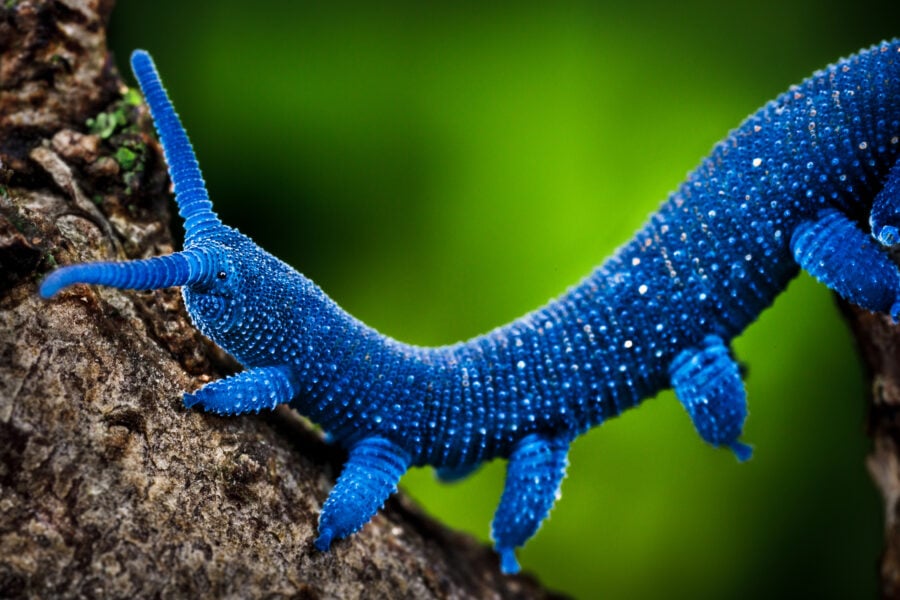Mussels and clams recruited as undercover agents

Murdoch University research fellow Dr Alan Cottingham is using bivalves to protect waterways and learn more about factors influencing their health.
Bivalves are aquatic molluscs with soft bodies protected by two hard shells joined by a hinge. Dr Cottingham began working on the concept six years ago and has named the new technology ‘Spyvalve’. It detects water decline in its earliest stages through sensors attached to the shells of bivalves, in this case mussels and clams.
“The idea was to use mussels as early-warning systems for environmental perturbations, mainly those that lead to fish kills,” Dr Cottingham told Australian Geographic.
“When fish die, the first thing they do is sink. It’s not until microbes get to work internally that gas is produced, which causes them to float. And then, we rely on members of the public to report the floating fish. By the time that’s investigated it can be a week or more and the fish could’ve drifted several kilometres.”
By then, he said, trying to tell what caused the death of the fish is often almost impossible.


Dr Cottingham’s inspiration to use bivalves as part of an alert system came from work done in drinking-water reservoirs in Poland.
“They have all the fancy equipment, as you’d expect in a drinking-water catchment. But on top of that, they have eight clams with sensors attached. And if all the clams close, they know there is a problem,” he said.
As part of Dr Cottingham’s current project, in partnership with the Alcoa Foundation, his team has six stations in waterways throughout the Peel region in Western Australia’s south-west. Each station has eight mussels in use as water monitors.
“We try to collect the mussels from exactly where our stations are,” Dr Cottingham said.
Some of the stations have black pygmy mussels, others Carter’s freshwater mussels, while one uses Mediterranean mussels.
“On one side of the shell we place a little 3D-printed custom sort of backpack, and that’s where the sensor attaches,” Dr Cottingham explained. “On the other side we place a magnet, because the sensor is actually reading a magnetic field.
“So, when the mussel opens, the magnet becomes further away from the sensor, and that changes the amount of millivolts the sensor records – and that tells us whether the mussels are open or closed.”

These sensors are read by a microprocessor that relays the information and livestreams it to the network where the data is analysed.
“If all the mussels at a station close for five minutes, that sends me an email to say there’s an issue with the water, and I get in contact with the Indigenous ranger group,” Dr Cottingham said.
These rangers are trained as first responders. “They will check for a bad smell – if there’s an algal bloom, or an obvious chemical spill, or dead fish, or aquatic surface respiration, which is something fish will often try to do when there’s low oxygen.”
If the rangers verify any of these signs, they can inform relevant government bodies, which could “do the full suite of collecting samples, collecting live dying fish,” Dr Cottingham said.
“They can be taken to the labs and processed, and from the analysis we should be able to work out what the cause was. And hopefully it’s something we can help prevent in the future.”
Dr Cottingham said while at this stage no major incidents had occurred in the areas being monitored, there had been a small number of alerts that had provided some insight into what was happening in the waterways.
“We’ve had a few from the Murray River where there’s been reports of dead fish but there hasn’t been a massive fish kill that we can actually see, so there hasn’t been a huge response to trigger all of our resources,” he said.
The system also picked up an unusual change in one ecosystem, which was found to be a large phytoplankton bloom that turned the water bright green, but was not toxic.


By monitoring responses of the bivalves to their surrounds, researchers can be informed of changes in environmental conditions that could otherwise go unnoticed until too late.
Dr Cottingham said there were environmental factors that seemed invisible that could be identified by taking note of the mussel alerts.
“We can’t test for everything, and there are also lots of things that have not even been named yet – that we are not aware of,” he said.
Dr Cottingham said the use of mussels was more affordable and effective than other methods of testing. He said other types of submerged sensors could be sensitive to biofouling – the growth of microorganisms, plants and animals on their surfaces. But mussels were used to this environment, and magnetic sensors were not impacted by such factors.
“So, when you compare that to things like dissolved oxygen sensors and other types of probes, it has a huge advantage. Not only are they cheaper but they are virtually maintenance-free, which saves a lot of human power.”




